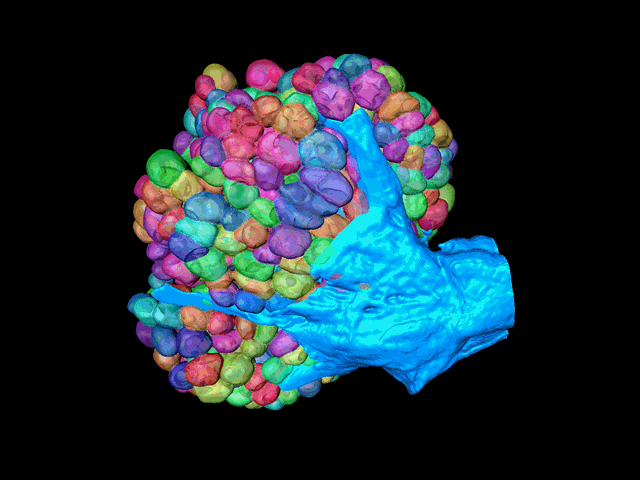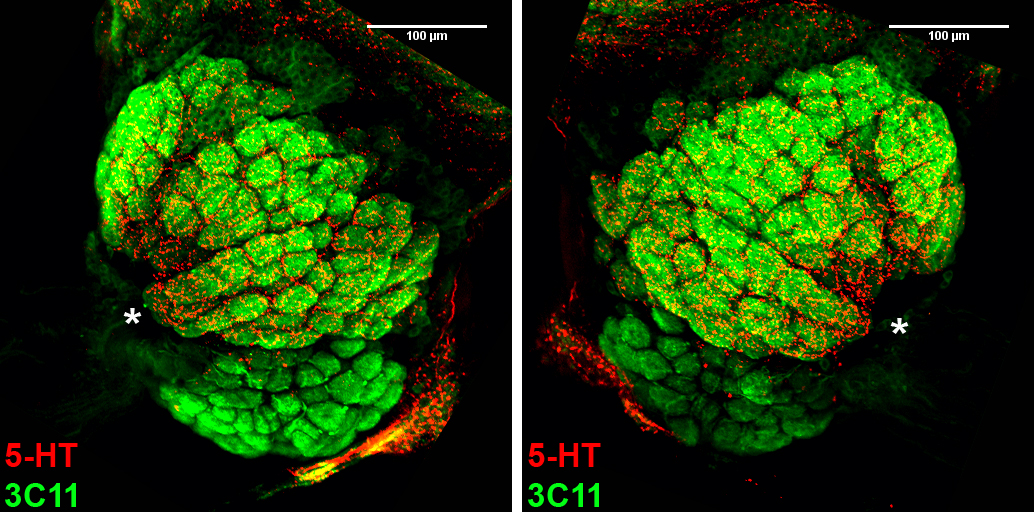Dr. Veronica Rodrigues - Olfactory Circuits in Social Insects
| People | Olfactory Circuits in Social Insects |
|
Keshava Subramanya
Arvind Suresh (Presently at Univ. of Pittsburgh, PA, USA) |
In social insects, communal life requires accurate “communication” between individuals. In many ant species, olfaction is known to be a major stimulus. In ants the colony structure is stratified into morphologically distinct castes which are specialized to perform different tasks- foraging, patrolling, colony maintenance, guarding the colony etc. We are studying the olfactory circuits of two sub-terrain species of ants, Camponotus sericeus and Camponotus compressus where the olfactory system in highly developed when compared to other sensory systems.
Video 1: Organization of the antennal lobe of Camponotus compressus as revealed by reconstruction using AMIRA 4.1. Present studies have revealed that there is a clear difference in the organization of the primary olfactory centre, the antennal lobe in different castes which can be reflective of the task performed.
Figure 1: Antennal lobes of Camponotus compressus stained with anti-serotonin (red) and anti-synapsin antibody. Further studies have been initiated to understand the organization of the olfactory sensory organs located on the antennae to test for variation in caste or gender in its organization.
Figure 2: Scanning Electron Micrograph of antennae of Camponotus compressus showing different types of sensory sensillae. Collaborator: K. VijayRaghavan, NCBS, Bangalore. |








